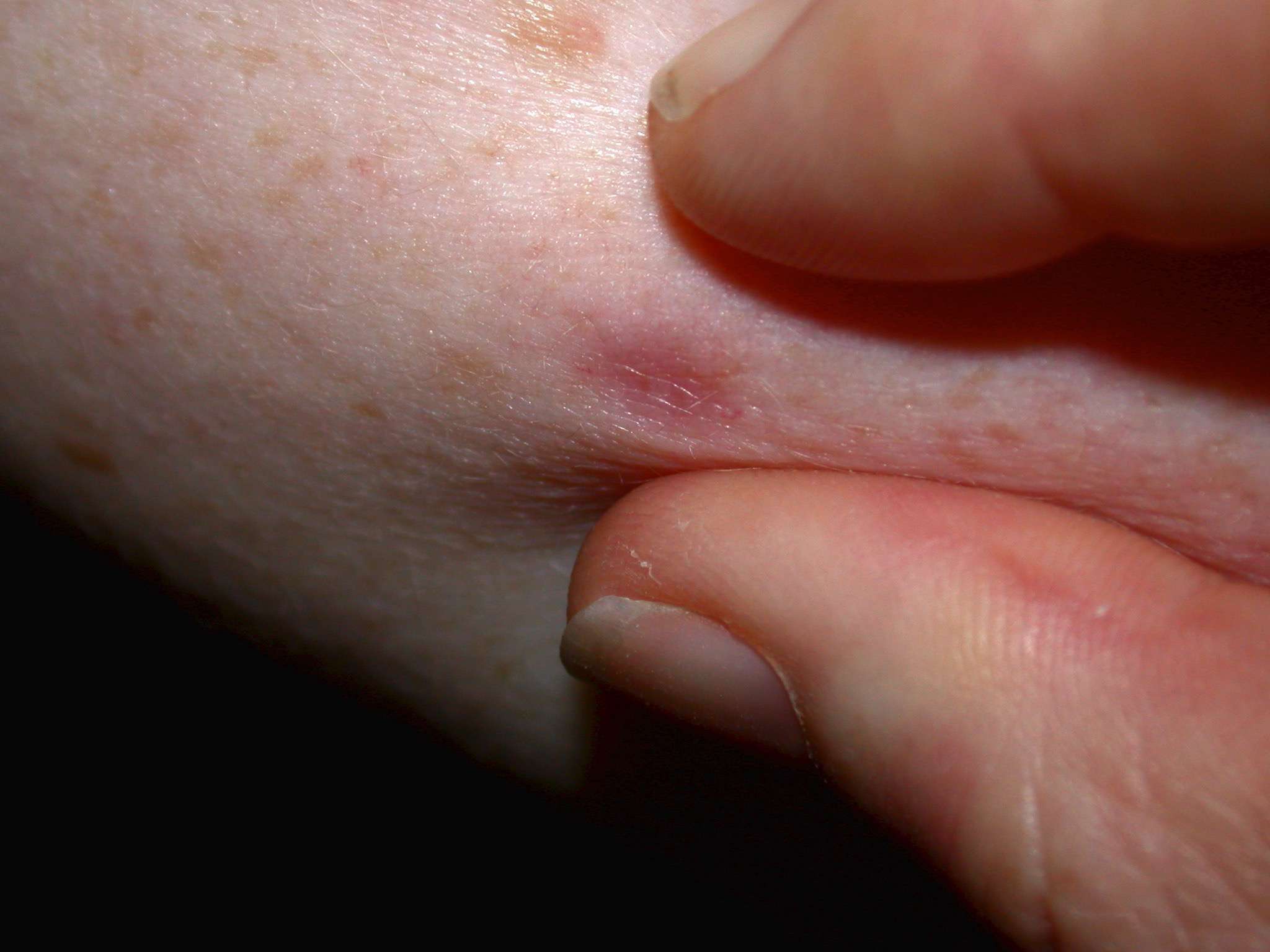
What is a dermatofibroma? A dermatofibroma is a common, benign skin growth often found on the legs or arms. These small, firm nodules can be red, brown, or purple and usually feel like a hard lump under the skin. They are typically painless but can become itchy or tender if irritated. Dermatofibromas are more common in adults, especially women, and are often mistaken for other skin conditions like moles or cysts. While their exact cause remains unknown, they are believed to develop in response to minor skin injuries such as insect bites or shaving cuts. Understanding these growths can help in managing and identifying them correctly.
Key Takeaways:
- Dermatofibromas are harmless skin growths that can appear as small, round bumps. They are usually painless but may itch or feel tender when touched.
- Protecting the skin from injuries and maintaining good skin hygiene can help prevent dermatofibromas. Regular skin checks are important for early identification and management.
What is Dermatofibroma?
Dermatofibroma is a common, benign skin growth. These small, firm nodules often appear on the lower legs but can be found anywhere on the body. Understanding more about dermatofibromas can help in identifying and managing them.
- Dermatofibromas are usually harmless and non-cancerous.
- They often appear as small, round, brownish-red bumps.
- These growths can range in size from a few millimeters to about a centimeter.
- Dermatofibromas are more common in adults than children.
- Women are more likely to develop dermatofibromas than men.
Causes and Risk Factors
While the exact cause of dermatofibromas is unknown, several factors may contribute to their development. Knowing these can help in understanding why they occur.
- Minor skin injuries, like insect bites or thorn pricks, can lead to dermatofibromas.
- They may develop as a reaction to a minor trauma or injury.
- Some people may have a genetic predisposition to developing dermatofibromas.
- Individuals with a weakened immune system might be more prone to these growths.
- Dermatofibromas are not contagious and cannot spread from person to person.
Symptoms and Identification
Recognizing the symptoms of dermatofibromas can help in distinguishing them from other skin conditions. Here are some key characteristics to look for.
- Dermatofibromas are usually painless but can be tender when touched.
- They often feel like a hard lump under the skin.
- The surface of a dermatofibroma may be smooth or slightly scaly.
- They can sometimes itch or cause discomfort.
- When pinched, the center of a dermatofibroma may dimple inward, a sign known as the "dimple sign."
Diagnosis and Treatment
Diagnosing dermatofibromas typically involves a physical examination by a healthcare provider. Treatment options vary depending on the symptoms and patient preferences.
- A dermatologist can usually diagnose a dermatofibroma by its appearance and feel.
- In some cases, a biopsy may be performed to confirm the diagnosis.
- Dermatofibromas do not require treatment unless they cause discomfort or cosmetic concerns.
- Surgical removal is an option if the growth is bothersome.
- Cryotherapy, or freezing the growth, can also be used to remove dermatofibromas.
Living with Dermatofibroma
Living with dermatofibromas involves managing symptoms and understanding when to seek medical advice. Here are some tips for those with these skin growths.
- Regularly monitor dermatofibromas for any changes in size, color, or shape.
- Avoid picking or scratching at the growths to prevent irritation.
- Use over-the-counter pain relief if a dermatofibroma becomes tender.
- Moisturizing the skin can help reduce itching and discomfort.
- Consult a dermatologist if a dermatofibroma changes significantly or causes concern.
Interesting Facts
Dermatofibromas have some unique characteristics and interesting facts that might surprise you. Here are a few to ponder.
- Dermatofibromas can sometimes be mistaken for other skin conditions like moles or warts.
- They are composed of a mixture of fibrous tissue and cells.
- Dermatofibromas can sometimes appear in clusters.
- They are more common in people with a history of multiple skin injuries.
- Dermatofibromas can occasionally change color over time.
Prevention and Awareness
While it may not be possible to prevent dermatofibromas entirely, being aware of risk factors and taking certain precautions can help.
- Protecting the skin from injuries can reduce the risk of developing dermatofibromas.
- Wearing protective clothing when outdoors can help prevent skin trauma.
- Using insect repellent can reduce the risk of insect bites that may lead to dermatofibromas.
- Maintaining good skin hygiene can help prevent infections that might trigger these growths.
- Regular skin checks can help in early identification and management of dermatofibromas.
Myths and Misconceptions
There are several myths and misconceptions about dermatofibromas. Clearing these up can help in better understanding and managing the condition.
- Dermatofibromas are not caused by poor hygiene.
- They are not a sign of skin cancer.
- Dermatofibromas do not spread to other parts of the body.
- They are not caused by a lack of vitamins or nutrients.
- Dermatofibromas are not related to warts or other viral skin conditions.
Dermatofibroma in Different Populations
Dermatofibromas can affect people differently based on various factors. Here are some insights into how they manifest in different populations.
- Children rarely develop dermatofibromas.
- People with darker skin tones may have dermatofibromas that appear darker in color.
- Dermatofibromas are more common in middle-aged adults.
- Those with a history of multiple skin injuries are at higher risk.
- Individuals with certain autoimmune conditions may be more prone to developing dermatofibromas.
Research and Future Directions
Ongoing research continues to shed light on dermatofibromas. Here are some current findings and future directions in the study of these skin growths.
- Researchers are studying the genetic factors that may contribute to dermatofibromas.
- New treatments are being explored to manage symptoms and remove dermatofibromas more effectively.
- Studies are investigating the role of the immune system in the development of dermatofibromas.
- Advances in dermatology are helping to improve the diagnosis and treatment of dermatofibromas.
- Future research may provide more insights into preventing and managing dermatofibromas.
Final Thoughts on Dermatofibroma
Dermatofibromas, those small, benign skin growths, often appear on the legs and arms. They’re usually harmless but can sometimes cause discomfort or itching. These growths are more common in adults, especially women, and can be triggered by minor skin injuries. While they don’t require treatment, some people opt for removal if they’re bothersome or for cosmetic reasons.
Understanding dermatofibromas helps in recognizing them and knowing when to seek medical advice. Regular skin checks and consulting a dermatologist for any unusual changes are good practices. Remember, while dermatofibromas are generally not a cause for concern, staying informed about your skin health is always beneficial.
By knowing these facts, you’re better equipped to handle any skin changes confidently. Stay curious and proactive about your health, and you’ll always be a step ahead.
Frequently Asked Questions
Was this page helpful?
Our commitment to delivering trustworthy and engaging content is at the heart of what we do. Each fact on our site is contributed by real users like you, bringing a wealth of diverse insights and information. To ensure the highest standards of accuracy and reliability, our dedicated editors meticulously review each submission. This process guarantees that the facts we share are not only fascinating but also credible. Trust in our commitment to quality and authenticity as you explore and learn with us.


